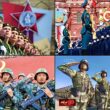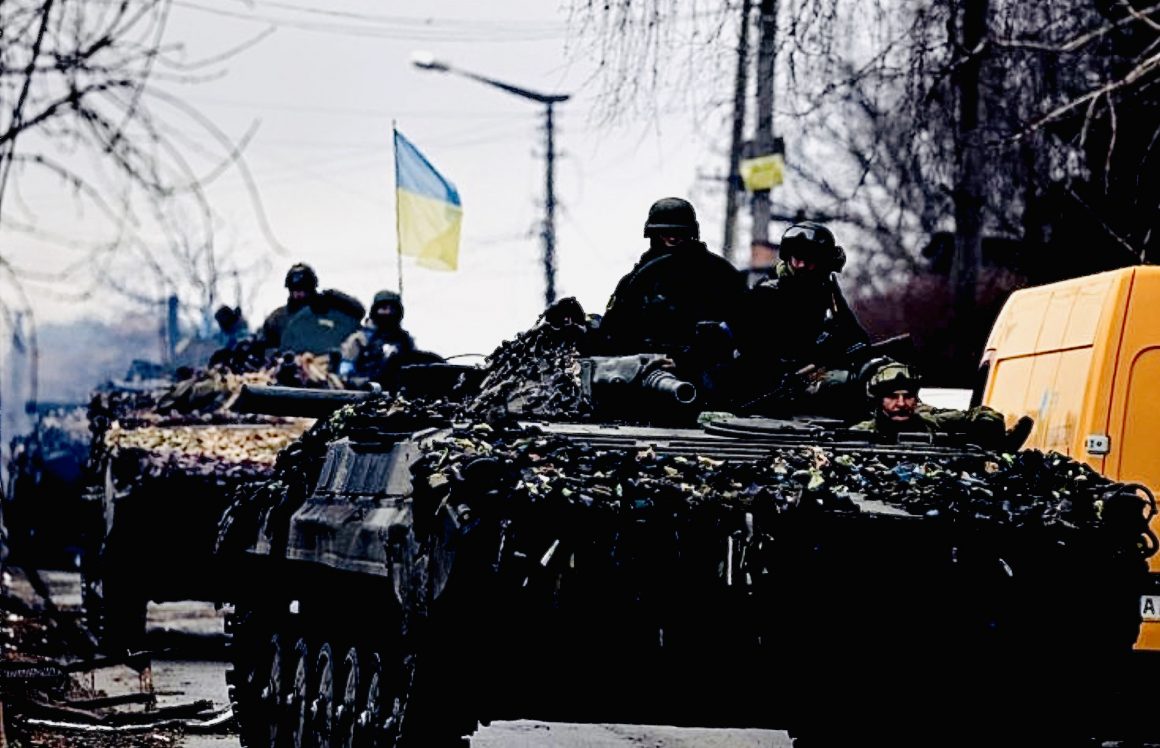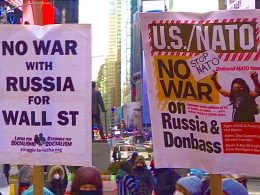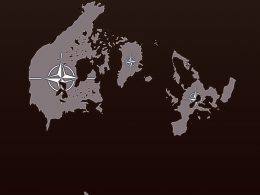Every hierarchical social system in history has, at its core, been created and perpetuated with the motive of providing material benefits for those at the top of the structure. When these systems have come in their most naked forms, the ruling classes benefiting from the people’s disenfranchisement have not tried to portray their actions as for the greater good. They’ve simply maneuvered to take what they seek via the sheer power their status has afforded them. When the oligarchs who ruled the Roman empire established a warlord aristocracy, and implemented policies designed to transfer wealth upward, their looting of the populations both in the empire’s colonies and core didn’t have to be marketed under a veneer of concern for economic production or technological innovation. These rationales that are used to justify capitalism, and its ever-intensifying austerity policies, weren’t necessary. The Roman oligarchs could carry out their extractive project on a basis of pure opportunism.
With the coming of capitalism, this phenomenon where wealth and power become concentrated to an ultimately unsustainable degree took on an accelerated new form. Capital required limitless growth, and therefore could only bring about a prompt cycle of expansion and implosion. Capitalism had more productive capacity than any past system, and therefore was able to upturn civilization on a scale dwarfing that of Rome. Yet it was this unparalleled ability to grow its reach that put the new system at great risk for collapse. Without the ability to perpetually expand into new markets, to displace its crises, capital would crumble under its own vast weight. Capital created for itself a crisis of overproduction, requiring the core capitalist countries to export goods by colonizing as much of the globe as possible. When monopoly capital emerged, this arrangement developed to imperialism’s modern form, where the core countries export capital to the peripheries.
In this period, where capitalism had reached its highest stage, war took on a more frequent and important role than the one it had during the times of pre-capitalist empires. By the end of the 19th century, when export of capital had become the form imperialism takes, the colonial powers had already reached the geographical limit on how much territory they could acquire. The peripheral countries had been fully divided among the different empires. The neo-colonial market assimilation of Ethiopia, Africa’s last anti-imperialist holdout, later completed the Global South’s integration into capital. The different empires still needed to expand into new markets, so conflicts between them became an inevitable fixture of history. Now whenever there was peace under capitalism, it only served as preparation time for the next war. And when the imperialist sphere became united under Washington’s leadership, the cycle of conflict continued, as there were still always peripheral or semi-peripheral countries that had to be forced into cooperating with U.S. capital.
The more advanced capital’s crises became, the more capital needed to intensify this practice of expanding into new market frontiers. Unlike Rome, which delayed its demise for many centuries by facilitating infrastructural development within the places it integrated, the U.S. empire’s relationship to the places it subdued was one of pure extraction. The existing global economic imbalances from the old colonial era were intensified during the ensuing neo-colonial stage, and worldwide inequality underwent an ongoing rise. This process of global-scale upward wealth siphoning has been engineered to compensate for the successive ways in which U.S. imperialism has declined. Fitting with capital’s rapid boom and bust dynamic, these disappearances of Washington’s strategic advantages began to occur right after it reached its hegemonic peak following the second world war. The imperialists failed to subdue socialist Korea, then lost the Indochina wars throughout the mid-20th century, then lost in Vietnam. The latter development catalyzed the economic contradiction the empire has been experiencing since then.
Even after the Soviet Union’s collapse, by the turn of the millennium it was apparent to U.S. strategists that American primacy may soon vanish. It was because of this continued fragility for U.S. hegemony that NATO wasn’t abolished after the Cold War ended, and that foreign policy thinkers adopted the mentality that major new conflicts needed to be prepared for. These thinkers prescribed that to create the social backing for a revitalized U.S. militarism, there would need to be a cataclysmic event, on the level of Pearl Harbor. What they didn’t anticipate is that after this event materialized in the form of the 9/11 attacks, and Washington vastly intensified its military industry and operations, the shrinking of the empire’s strategic dominance accelerated as a consequence. The imperialists had over-extended themselves, launching destructive and unilateral wars that would destroy much of Washington’s international respect. By the end of the 21st century’s first decade, China and Russia were in place to build an alternative to the U.S. global order, and Iran was in place to supplant U.S. influence across southwest Asia.
These powers have since been able to so successfully reduce U.S. power not just because of the loss of Washington’s credibility across the Global South, but because the empire has for many decades been seeing its 20th century expansions reversed. It’s lost control over its former neo-colonies Cuba, Iran, Nicaragua, and Venezuela, then followed by Bolivia. China has for the last decade been loosening imperialism’s grip over scores of other countries, simply by providing them with the means to become economically independent from the empire. Some of these countries, such as Iran, Venezuela, and Ethiopia, have held great strategic importance for Washington; the former two have accelerated the decline of the petrodollar, and the latter is helping turn Africa away from U.S. influence.
In the places that Washington has been able to expand its reach into during the last generation, the outcome has been rapid looting of the given country, followed by failure to utilize the captured state towards achieving U.S. strategic goals. The U.S. could carry out a campaign of corporate extraction within post-invasion Iraq, but it couldn’t stop Tehran from making Baghdad into a strategic asset. This was a development that the destructive nature of the U.S. occupation, and of the outside-imposed neoliberal shock policies, made all the more likely. The U.S. could loot post-coup Ukraine in a parallel fashion, but it couldn’t use Kiev to carry out its goal of destabilizing Russia via proxy warfare. Russia’s survival as a state has become assured, as it’s made a Ukrainian victory logistically impossible and managed to be less harmed by the sanctions than Europe and America have.
The inescapable dynamic for U.S. imperialism at this stage is one of progressive decay. Even when it succeeds at regime change in a country, the profits it gets from this won’t bring a sustainable source of extraction, one that could revitalize the neo-colonial order. And when it uses a country as a weapon against one of imperialism’s challengers, failure is ultimately the product. Because imperialism is in a state of terminal contraction, where it no longer has hope for winning the game of geopolitical chess and therefore must see its neo-colonial spoils continue drying up, it has but one option. That’s to extend its existence for as long as possible by gaining whatever footholds it still can, and use ever-intensifying austerity to keep profits up.
—————————
One region where imperialism can still maintain enough of a grip to extend its lifespan is southeast Asia, and by extension Oceania. This is in part because Washington has managed to form a relationship of military and economic cooperation with Vietnam, based on appealing to the Vietnamese ruling party’s perception that working within America’s “rules-based international order” represents the country’s most pragmatic option. Due to the party’s openness towards collaboration, the country’s workers have become subject to many of the same exploitative dynamics that neo-colonialism has imposed upon the wider peripheries. Vietnam has been assuming the same predominant manufacturing role for the U.S. that China used to have, making imperialist demonization of Vietnam comparatively mild compared to the anti-China narratives. Vietnam has been carrying out projects for defense cooperation with Washington, and with Washington’s allies in the hemisphere.
This success for imperialist diplomatic influence doesn’t mean Washington hasn’t lost on the Eurasian geopolitical chessboard, as the failure of Washington’s Ukraine maneuver has definitively shown it has. But it does mean the imperialists have the ability to maintain their existence for some time more than otherwise, and to bring forth their designs to a greater extent. The same conclusion can be gleaned from the diplomatic inroads that Washington has been making with Kazakhstan in the last year, or from the compromises that Washington has been able to persuade Venezuela’s government to make, or from the military buildup across Africa that Washington has gained from enabling the abuses of many African neo-colonial regimes. The empire has been progressively militarizing every region where it still holds influence over the local states, and in the peripheries, this has made for a thickening occupation of historically colonized nations. This doesn’t apply to Vietnam, which allows no U.S. bases, but Vietnam’s partnership with Washington has provided a better environment for militarization elsewhere.
The region where this intensifying presence of arms buildup has come to most enable imperialist warfare is eastern Eurasia. Now that Washington has pulled out of its biggest operations in southwest Asia, it’s relocated its primary location for creating arms industry profits from Afghanistan to Ukraine. And more significantly, it’s strengthened its strategic alliance across Europe, especially within the former Russian economic asset Germany. Even though the U.S. remains unable to assimilate Belarus into its anti-Russian proxy warfare operations, and is encountering growing resistance to these operations from a Poland whose historic disputes with Ukraine are being reopened, Germany’s committment to supporting the war has set Europe on a path it’s been down before. History shows that when Germany heavily invests in arms, it becomes capable of transforming the entire region in a way that’s favorable to capital.
As the new cold war escalates, Germany will increasingly be used as a weapon in this way, along with the region’s other historic center for fascist warfare Italy. The same applies to Scandinavia, which has become both fully integrated into the war effort and taken over by ultra-nationalist parties. Beyond this rekindling of fascist warfare in its traditional locations, imperialism’s goal in eastern Eurasia is to sow conflicts between peoples who were friends during the socialist era. Washington has backed an invasion by Azerbaijan of Armenia, seeking to divert Russia’s resources towards a second proxy war.
These instigations of conflicts are being undertaken to compensate for how the Global South isn’t overall willing to back Washington’s maneuvers against Russia and China. In the exploited countries that are most closely tied to U.S. imperialism, like Chile and India, there is support for these maneuvers, but the broader peripheries are acting according to their self-interest and joining the multipolar order. Historic peripheral military allies of imperialism, like Brazil, have become unwilling to assist in Washington’s operations to occupy smaller neo-colonies. Global South proxy warfare states like Sri Lanka have only sided with Washington due to U.S. meddling in their political systems, and the crises neo-colonialism is creating for them are getting so severe that they’re having to do things like cut their military personnel. It’s in the former eastern bloc that Washington is now most effectively able to compel countries to wage war on imperialism’s behalf, and is best able to implement neoliberal shock policies without encountering resistance. This is because of their fascist history, which has come to define them since the fall of the USSR.
It’s these places that determine the future of imperialism, and the viability of imperialism’s machinations. Not the places where imperialism’s warfare has been able to perpetuate destruction, such as Somalia, northeastern Syria, or the conflict-ridden borders of Iraq. In these places, the misnomered “War on Terror” has successfully created a cycle where U.S. intervention destabilizes the area, this creates terrorist organizations, and this provides a pretense for new military involvement, all while the oil and arms industries profit. This cycle is theoretically able to be kept up forever, unless one of the countries the wars take place in manage to build a stable state that expels the U.S. military (like in Afghanistan’s case). Washington’s goal is to make it endless, and to expand the locations for the forever wars into more territories. This way, there will be less states to facilitate China’s Belt and Road Initiative.
Since the frequency of imperialist warfare multiplied at the century’s start, to the effect that America’s last generation has never seen a time when their country hasn’t been at war, this arrangement has been able to keep capital strong. The U.S. economy has been further deindustrialized, and at the same time prioritized more around weapons manufacturers, a process that’s now being extended into Europe. But the present setup can’t be made permanent. The petrodollar continues to slowly die, despite imperialism’s recent successes at getting Venezuela to compromise and carrying out coups in more vulnerable countries like Peru. The consequential trend is one towards a scenario where the empire undergoes an unprecedented contraction, one so massive that it will force the U.S. to close most of its nearly 800 worldwide military bases. This will exacerbate the damage global warming is going to do to global U.S. military infrastructure, and help the movements across the peripheral countries to kick the U.S. out. Mali’s expelling of French NGOs exemplifies how these countries are becoming more able to expunge imperialist influence in all forms, and will accelerate this process as Washington’s hand keeps weakening.
The Ukraine proxy war’s drain of the U.S. military foreshadows this. It’s because of modern imperialism’s nature as a force entirely prioritized around profit that it’s found itself in such a dilemma. Unlike Russia’s weapons-manufacturing industry, which is state-owned, the USA’s is a corporate machine that’s therefore liable to corruption. Because it’s corrupt, it’s placed making money above producing the materials that would be needed to win the conflict, giving Russia the advantage. Kiev and NATO have become too exhausted in their supplies to prevent the demilitarization of Ukraine, with the claims about Russia running out of missiles being pure propaganda. This is an early stage in the breakdown of Washington’s global military primacy. When it reaches the point where its rivals can no longer be countered to any meaningful degree, the system’s contraction will greatly accelerate. Faced with this reality, our ruling class sees the sacrifice of a large section of humanity as the only way to preserve the system.
—————————
What this means is the weaponization of global warming, and of all its related crises. The imperialists have been doing this since over a decade ago, when they exploited Syria’s drought to manufacture a conflict. And their strategists have made plans for expanding it to the Global South as a whole, anticipating how climate chaos will provide opportunities for numerous interventions on a “humanitarian” pretext. This year’s military operation in Haiti, which was portrayed as a “stabilizing” effort but was actually about defending the neo-colonial regime from the workers movement, was one of these invasions. The more the seas rise, resources are strained, and the warming planet proliferates diseases, the more narrative leverage there will be for military actions.
This process has a time limit. When U.S. currency fully loses its dominance, Washington’s ability to wage war will be enormously shrunken. So in anticipation of the contraction reaching that point, the empire is working to maximize the amount of damage it inflicts. Because the more destruction it can create, the more profits can be gained from the crises. This is where the depletion of resources can advance capital, even as it undermines the foundations of civilization. Less oil, water, minerals, and timber means greater profits, because scarcer commodities sell for more. The ruling class is making control over resources the central militarist goal during the climate crisis. Which doesn’t necessarily entail waging wars with the objective of gaining control over resources, because dominating markets isn’t always dependent on attaining more of a certain material. In the case of the Ukraine conflict, it’s been sufficient for the U.S. ruling class to cut Europe off from Russian oil, letting American petroleum companies make greater profits.
The principle this demonstrates, where markets are most immediately important for the system’s survival, implies that capital can survive the climate crisis. Whatever losses that the world undergoes due to global warming—the submersion of the globe’s most densely populated land, the disappearance of the largest forests, the transformation of much of the equatorial land into uninhabitable space—don’t in themselves represent losses for the ruling class. Because these crises are being profited from more the further along they develop, on their own they represent benefits to capital. The risk comes from the impacts these crises have on the social order, in which scarcity and falling living standards can produce popular discontent. The requirement for continuing this consumption of the planet is that as nature gets destroyed, societies break down, and tens of millions perish from the impacts of climate catastrophe, the elites manage to prevent this chaos from bringing revolution.
This task can be easy. As long as the chaos is kept as chaos, and revolutionary organizations are kept from turning it into an ordered effort at building a proletarian state, capital benefits from the globe’s destabilization rather than becomes threatened by it. This is the pattern emerging in the failed states U.S. imperialism has cultivated, like Ukraine. The breakdown of Ukraine’s rule of law has enabled the sell-off of even more public resources to corporations, and the imposition of even more neoliberal shock policies, all without provoking mobilization from the workers. This is because imperialism’s intelligence centers have backed fascist militias that beat, execute, and massacre their targets with impunity. These reactionary terrorist organizations have filled the vacuum left by the disintegrating state, creating a paradigm of capitalist anarchy that isn’t threatened by the prospect of revolution. The people have been too terrorized, and too cut off from the institutional or educational outlets that an effective workers party requires, to resist their disenfranchisement. This is the form that imperialist wars are to increasingly take as Washington’s military capacity weakens: asymmetrical, proxy-facilitated conflicts, created through intelligence operations to engineer violence.
Imperialism won’t end on its own. Its extinction will only come when the people of the imperialist countries defeat their capitalist states. Until then, it will survive by incrementally reducing the peoples of the core countries to a status equivalent to the Ukrainian proletariat, and even more so by intensifying the exploitation of the peripheral countries it still controls. With every new war it creates, the destructive impacts will be more severe, and will accelerate the development towards the end outcome. What that outcome will be depends on how well those who are opposed to imperialism navigate our conditions.
Vietnam’s communist party, as well as Venezuela’s governing “21st century socialist” camp, have drifted in the direction of unnecessary compromise with imperialism. But Russia and China, countries with far more leverage, have set themselves on the optimal path towards countering Washington. Russia’s government is militarily acting according to the wishes of its communist movement, which has the strategic knowledge required for defeating fascism. The Communist Party of China is transitioning away from its liberalization period and becoming more committed to standing against Washington. All of these decisions were made in response to Washington’s forcing every country to pick sides in a new great-power competition. The 21st century cold war has strengthened the forces of reaction in some respects, but it’s also strengthened the forces for revolution in more meaningful ways.
These trends towards solid anti-imperialist practice among the emerging superpowers will advance as the globe’s crises unfold. Rising sea levels and intensifying heat waves will bring tremendous damages to Chinese society, but like the CPC has done with the pandemic, it will find ways to mitigate the harm. China is infinitely better equipped to handle the climate’s breakdown than is the case for most of the capitalist world, and this applies to the other workers states, Vietnam included. The tendency is for socialism to act pragmatically amid our era’s crises, while capitalism causes the bourgeois states to sabotage their chances for reducing harm.
To stop the people from rising up in response to this situation, capital needs to find a way to sacrifice vast amounts of human lives while keeping revolution a distant prospect. This calculus of prioritizing profit over life, even should the drive for profit destroy entire regions’ worth of life, is apparent in how the ruling class is willing to risk nuclear war. During the previous cold war, this wasn’t as true as it is now, since the U.S. at least cultivated detente. But in the age of declining U.S. hegemony, Washington’s diplomacy tools have been systematically dismantled. There are no longer any means for reducing the nuclear conflict risk, other than the indispensable back-channels. Without these secretive communication outlets, a third world war would likely have happened by now, which is why today’s nuclear war risk is higher than it’s ever been.
Whether or not this escalation happens, the climate crisis has made it guaranteed that much of the globe will be rendered uninhabitable, and that much of the population won’t survive the next several generations. In either scenario, the cause behind the die-off will be the same: the imperial project, which has perpetuated the global capitalist order that keeps emissions up. It’s also created the unparalleled institutional pollution source which is the U.S. military.
At this stage in the decline of capitalism, where the contraction of the socioeconomic system is happening alongside the decline of its head imperialist power, capital’s conflicts are no longer about enriching the people of the core countries. The labor aristocracy that imperialism has traditionally cultivated began shrinking when the neoliberal era began in the 70s. At this point around two-thirds of the population, including many of those with formerly quite comfortable incomes, are living paycheck to paycheck. The war in Ukraine is why inflation has become so severe, in the latest demonstration of how austerity for the core’s workers is what lets the imperialists carry out their machinations.
Whereas during certain periods of the new imperialism, the wars let the core’s people enjoy rising living standards by perpetuating neo-colonialism, in modern times the wars provide less and less material benefit to the people of the core. This is not because none of the wealth from imperial extraction any longer reaches the core’s workers, but because for the last half-century, the living standards they enjoyed post-World War II have been unattainable. Every lull between an economic downturn takes place in a society that’s more unequal than it was during the last lull, making the overall trend one towards most of the population becoming destitute. With each stage of this war against the working class, the socioeconomic system becomes less intellectually defensible, the old arguments in favor of neoliberal austerity having lost their credibility long ago. Which is making class society revert to its ancient state, where the ruling class doesn’t even try to justify its opportunism and merely takes because it can get away with doing this.
The shrinking of the class in between the rich and the poor, so that most people now don’t have the insurance against desperation which past generations had, was the preparation for a scenario where the people had to be sacrificed so capital could survive. Covid-19 has already made this politically expedient kind of death come for over one million in the imperial center alone. The exceptionally high U.S. pandemic mortality rate is largely attributable to the country’s obesity crisis—itself a symptom of the country’s widespread poverty. The rise in social inequality, both in the core and the peripheries, has made much of the globe ill-equipped to survive the climate crisis in the equivalent ways. The inevitable outcomes of capitalism have brought humanity to a point where a population reduction on the scale of the Black Death is soon to come, and is in its early phase.
On an international scale, the outlook for revolutionary politics is increasingly optimistic, as multipolarity has arrived. On a local scale from the perspective of the peoples within the core countries, and within the countries solidly under imperial control, the situation is bleak. The survival of imperialism into the next several decades is going to have gargantuan human costs, costs that can only be reduced by a revolutionary wave in both the peripheries and the core. How well the class struggle in the core manages to counter militarism is the decisive factor in how easily capital can be defeated. The ruling class has invested the system’s future in the continuation of the present dynamic, where Washington is able to perpetuate the conflicts that keep the state healthy. Exposing the destructive consequences of these wars, and the misleading nature of the pretexts behind them, is vital.
—————————————————————————
If you appreciate my work, I hope you become a one-time or regular donor to my Patreon account. Like most of us, I’m feeling the economic pinch during late-stage capitalism, and I need money to keep fighting for a new system that works for all of us. Go to my Patreon here.








